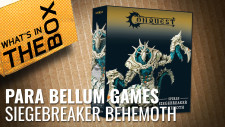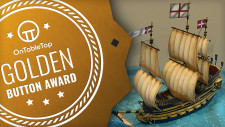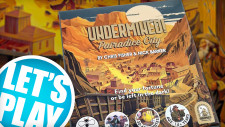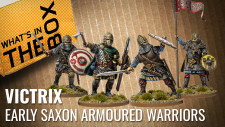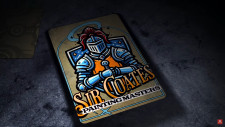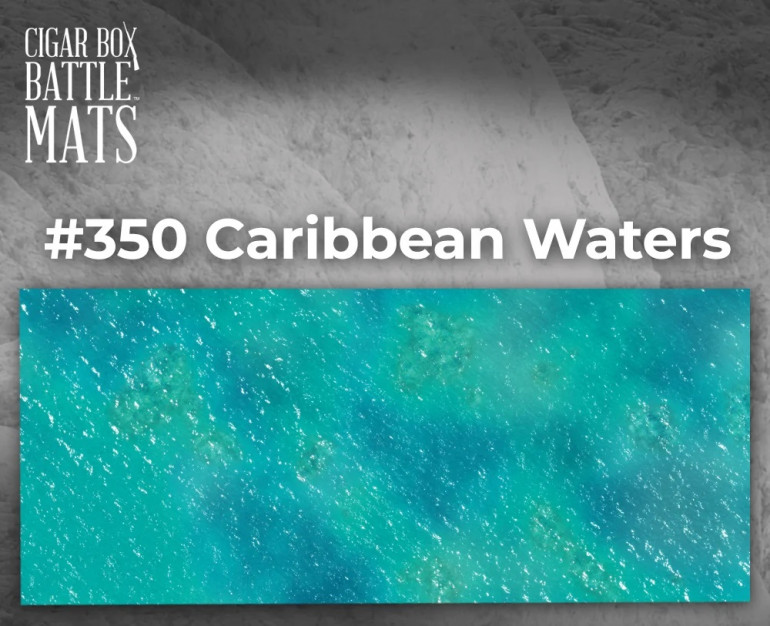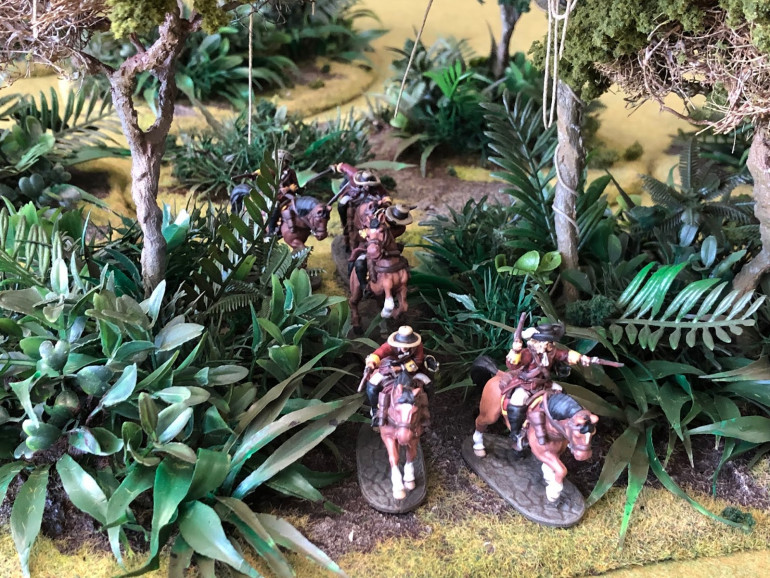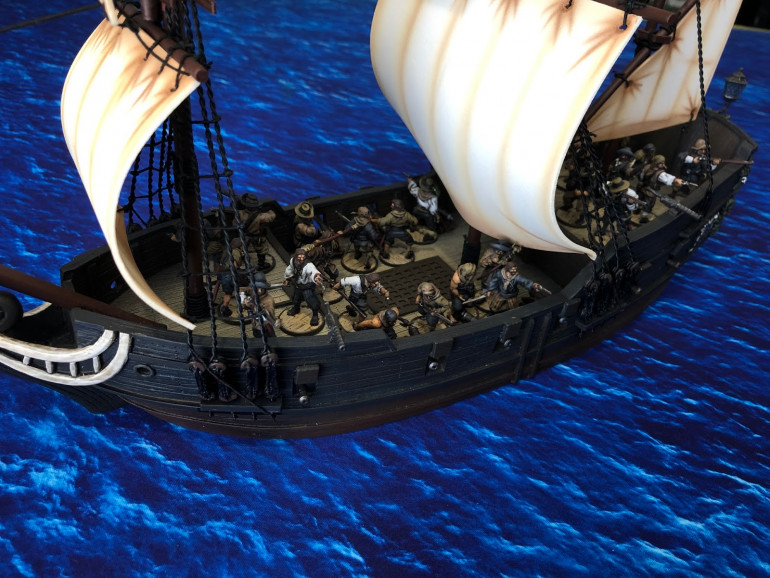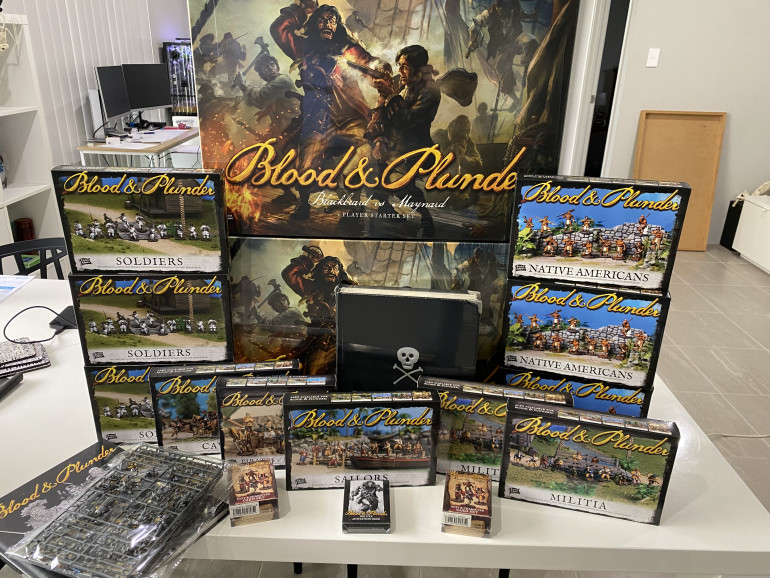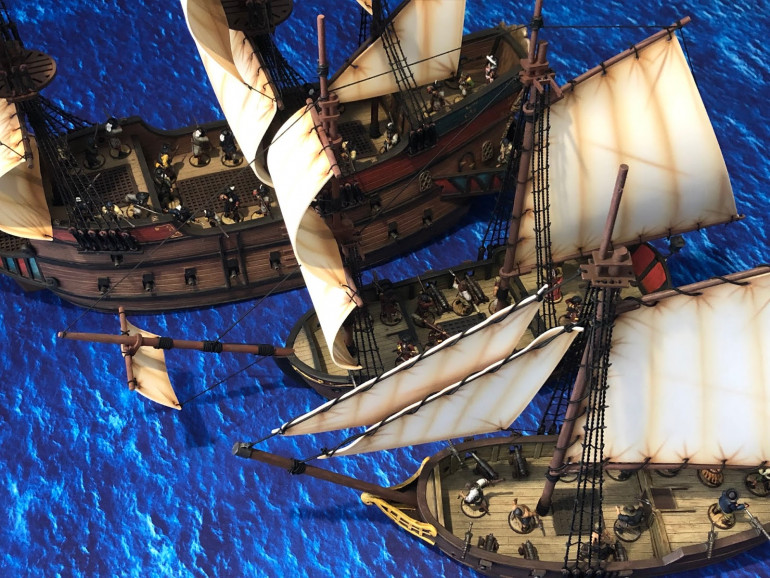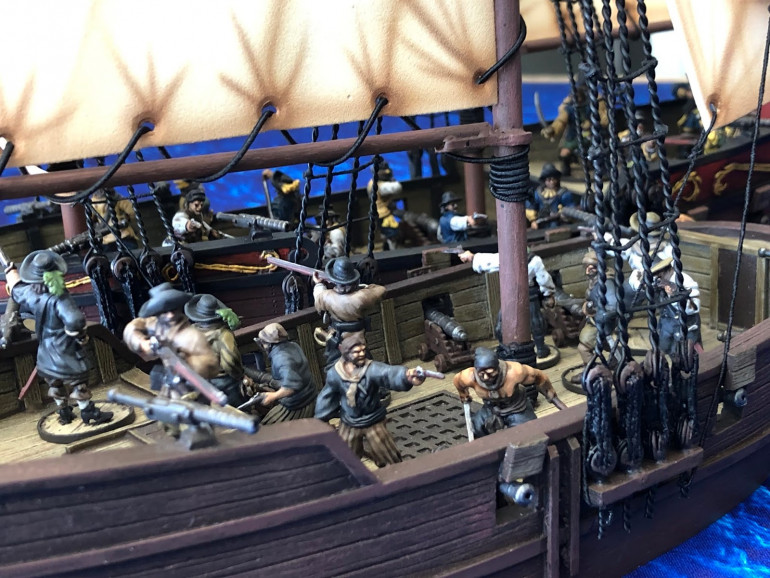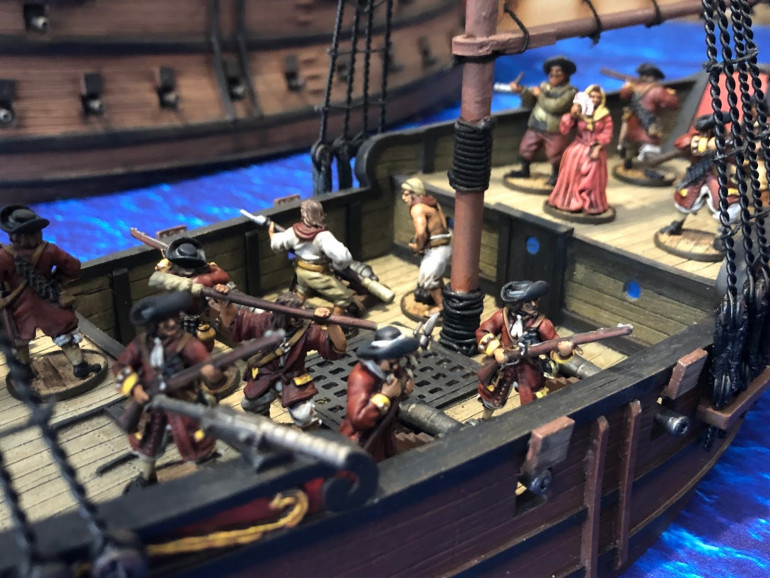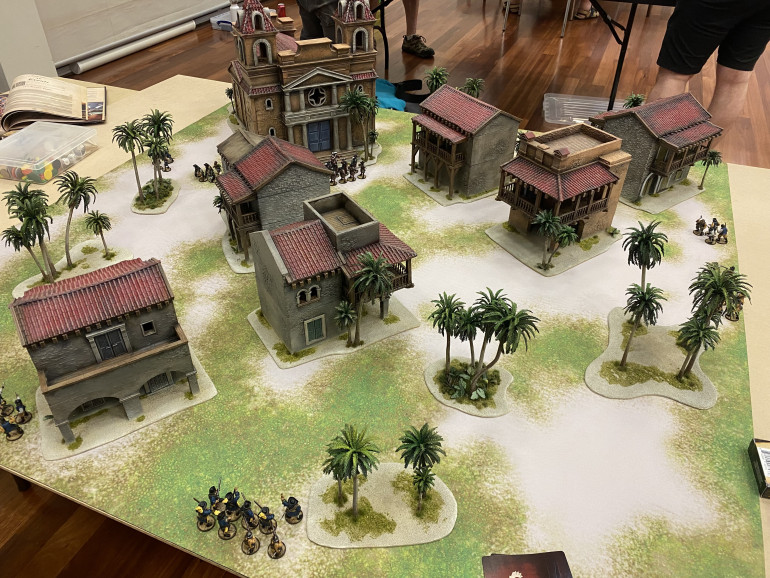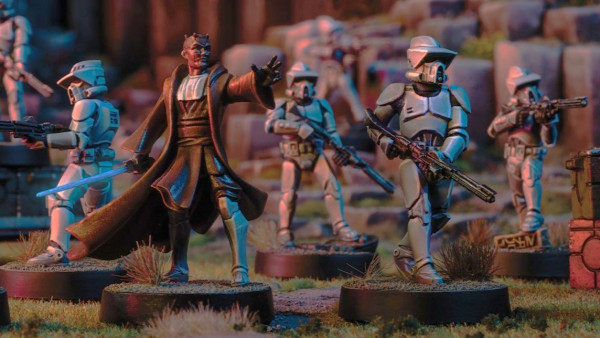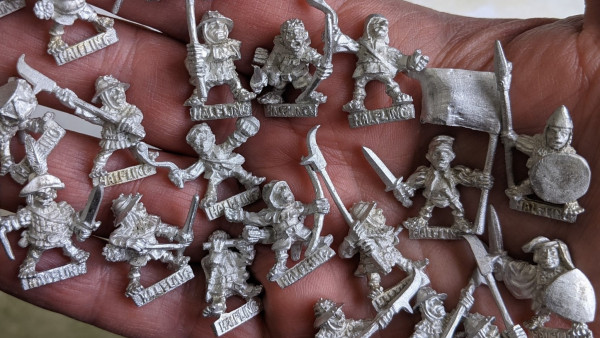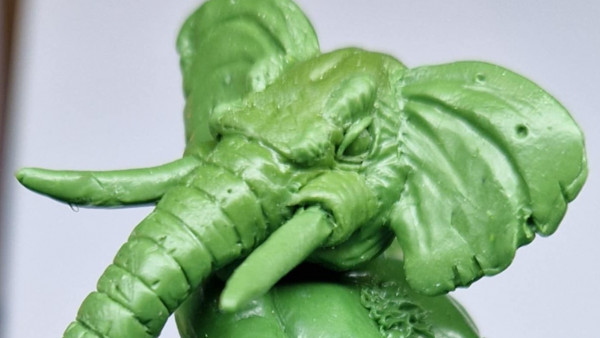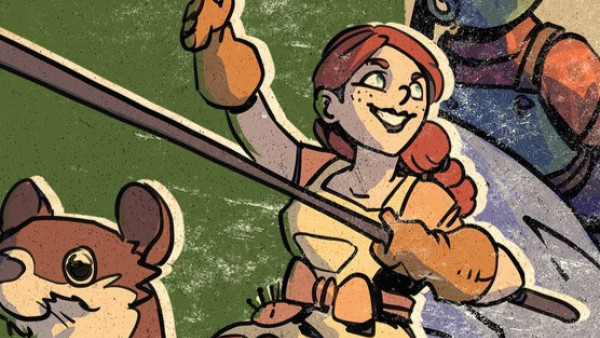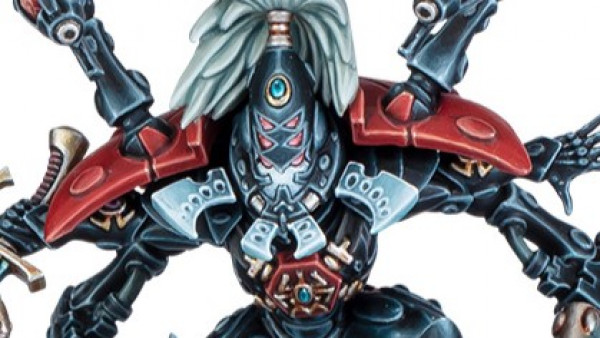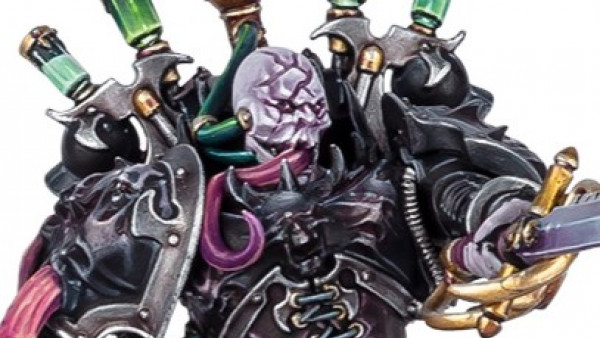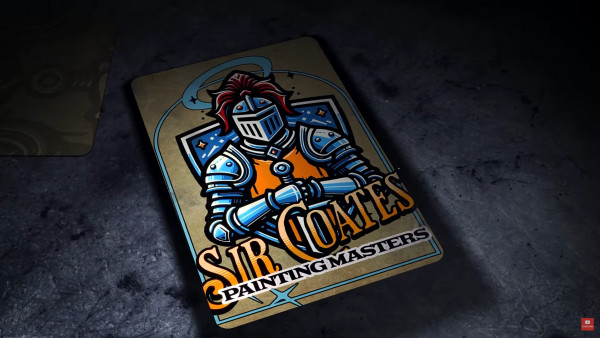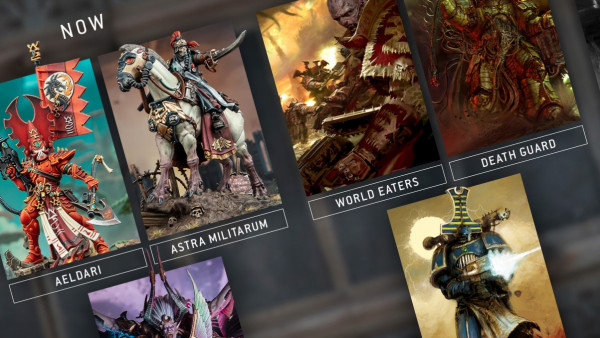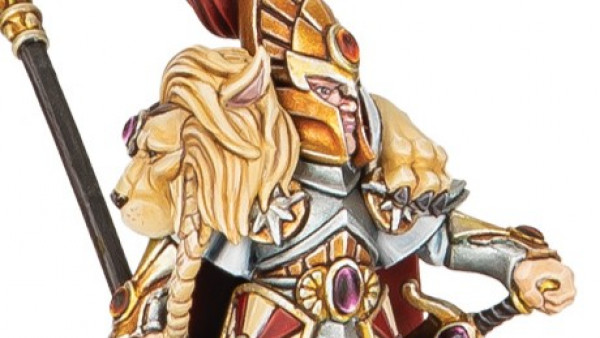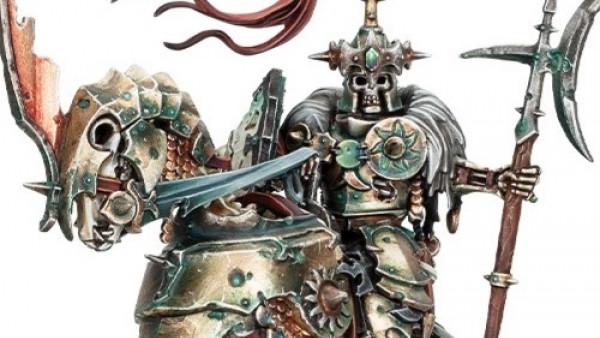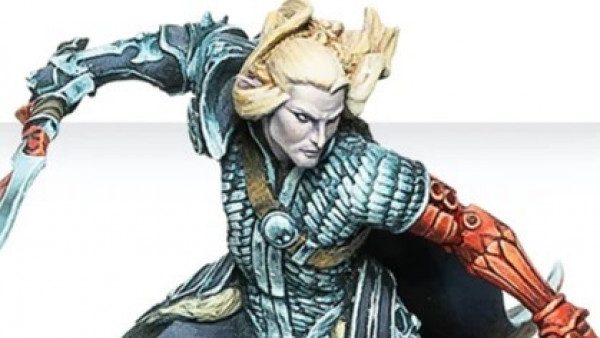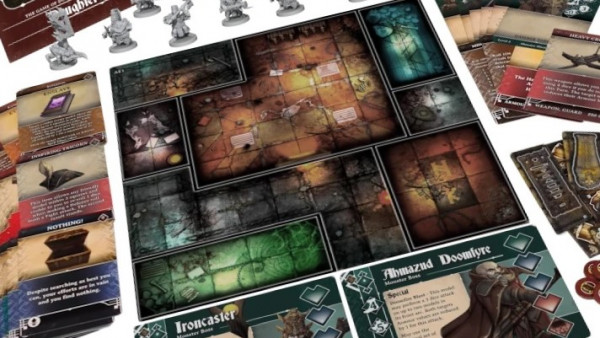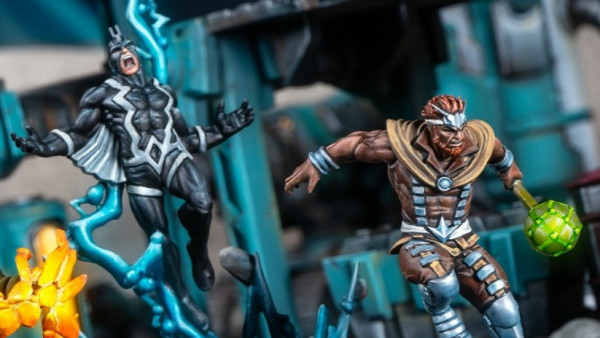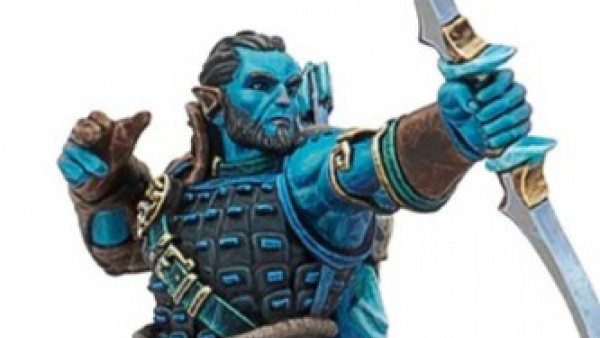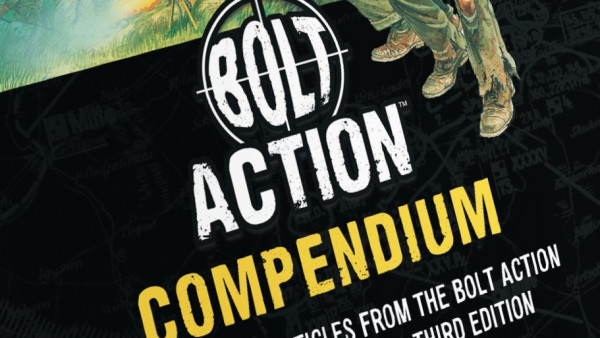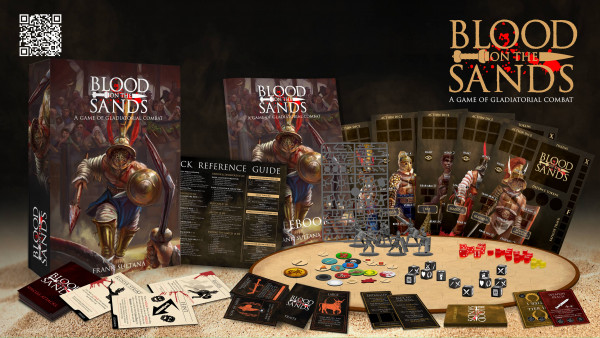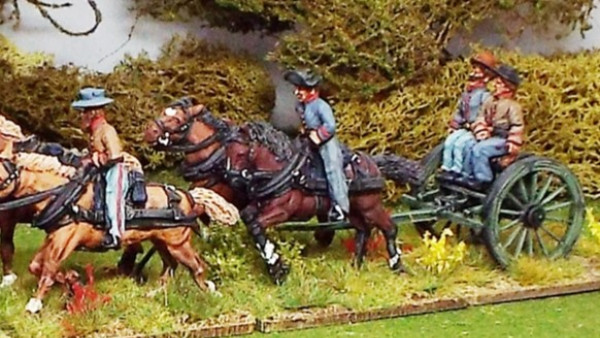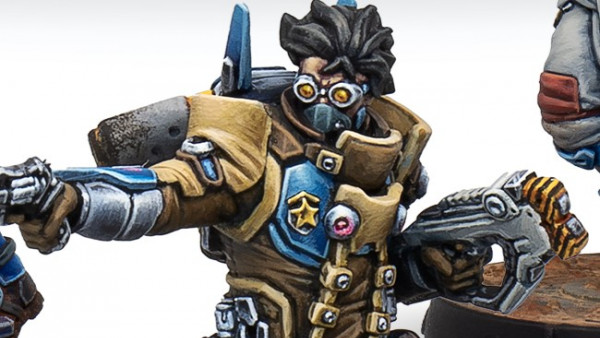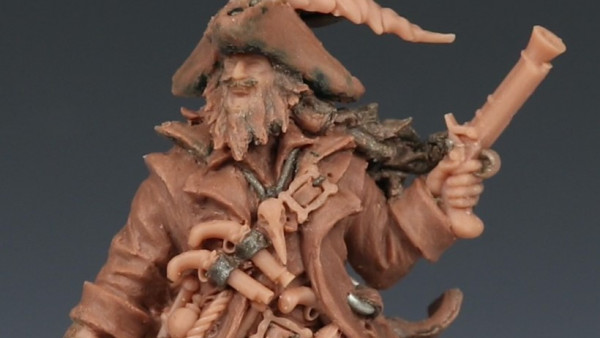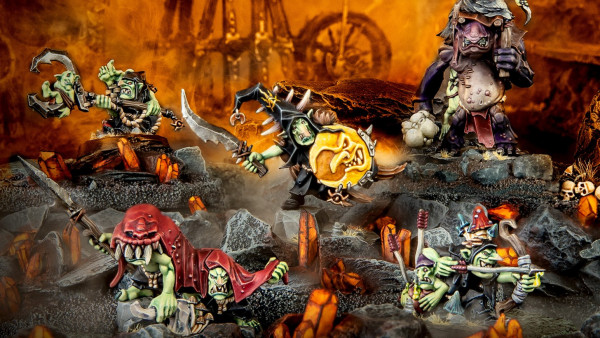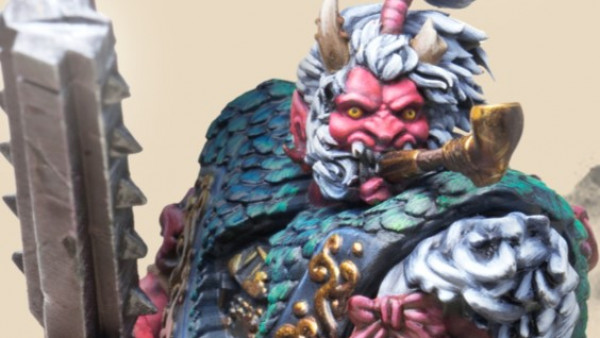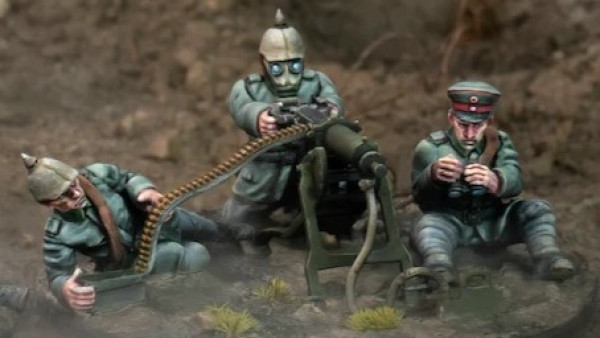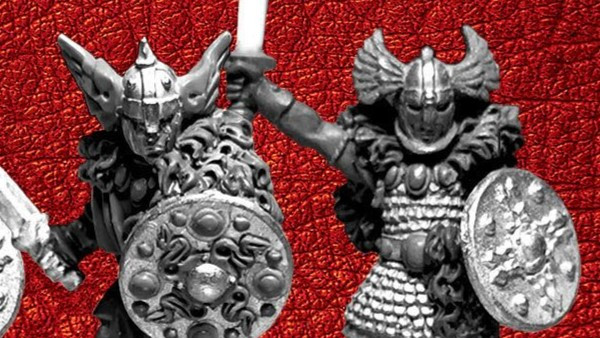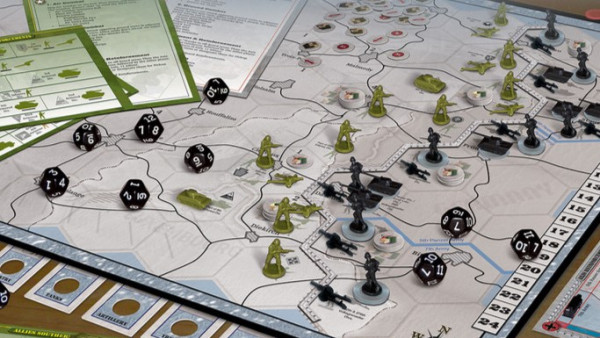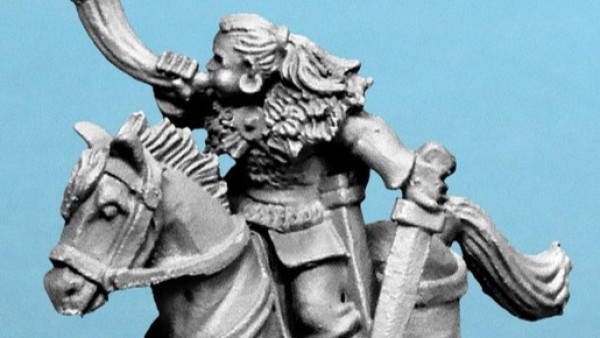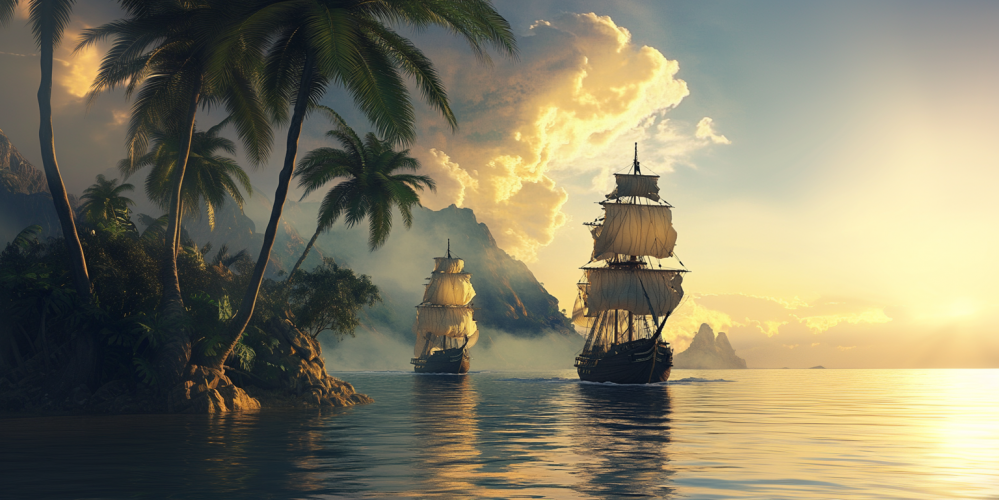
Something a little naughtical
Recommendations: 58
About the Project
What’s a Pirates favourite letter of the alphabet? If you are thinking it’s R you would be wrong, they are all about the C. I love making terrain. In fact it’s my favourite part of the whole hobby. I also like sailing ships. I’m not sure why, I just like the look of them. So, what can I do with ships and terrain? The thing about ships is they tend to be in the water, and ship on ship combat also normally happens on the water on the open sea. Now the thing about the open sea is it doesn’t really lend itself to an exciting terrain build. So here we come to a quandary. I could do ships in an open sea and have ship to ship combat or I can do a ship in a harbour and do terrain. Or I can do something else….
Related Game: Blood & Plunder
Related Genre: Pirate
This Project is Active
Playing Surface.
As I mentioned at the beginning of this project, I have a 6′ x 4′ blue neoprene mat that is just not cutting the mustard for me. It’s too blue for my liking and probably more Atlantic Ocean than the Caribbean. Secondly, the ships are quite large, and things will get cramped really quickly on a 6′ x 4′ table.
So, with those two points in mind, I ordered a larger mat to use as the base for the playing surface. Considerably larger in fact.
Cigar box battle mats looked to have an ideal solution with a Carribean Waters mat measuring a decent 6.5′ x 15′
The mat arrived the other day and I was quite surprised at how quickly it was delivered to me here in Western Australia. It’s a cloth mat which makes it much lighter than my other neoprene mats and folds up quite small. The best part is that it doesn’t appear to crease at all.
My plan from here is to run with one mat over a 6′ x 14′ table and then if that starts to feel a little small add another mat alongside it on a separate table. There would have to be a gap between the two tables though so the ships can be reached to allow movement. If a ship sails off one map along the long edge it will appear on the other mat along the long edge, possibly in the following turn. I’d have to work on how that will work in the game.
That would give a total playing surface of 12′ x 14′. I can’t imagine needing to go any bigger than that, although stranger things have happened at sea as they say.
On top of the mats, I will build up islands and land masses to add variety. The idea is that there should be possibly 3 islands which trade goods in a triangle formation, A pirate hideout of sorts, a cannibal island (or at least a place that appears to be unoccupied by the civilised world) and a few other pieces that can be placed around to provide both obstacles for ships to navigate and potential cover from incoming cannon fire.
I have a few large ships in my collection that can pack a decent amount of firepower so some places where smaller ships can slip through would be a good idea too.
Keeping islands small and land masses somewhat modular will allow me to use those parts in smaller setups for skirmish-level games. If I also stick to a similar colour palette with things it will increase the modularity of terrain pieces.
A quick stocktake of the fleet.
Because we are currently trying to sell our house, I haven’t been able to make any significant progress on this project yet. However, it has given me the time to do a small stocktake of the ships I currently have built.
The flags are all removable and not necessarily on the ships they are ultimately destined for.
I also have another 9 ships that are unbuilt and currently packed away.
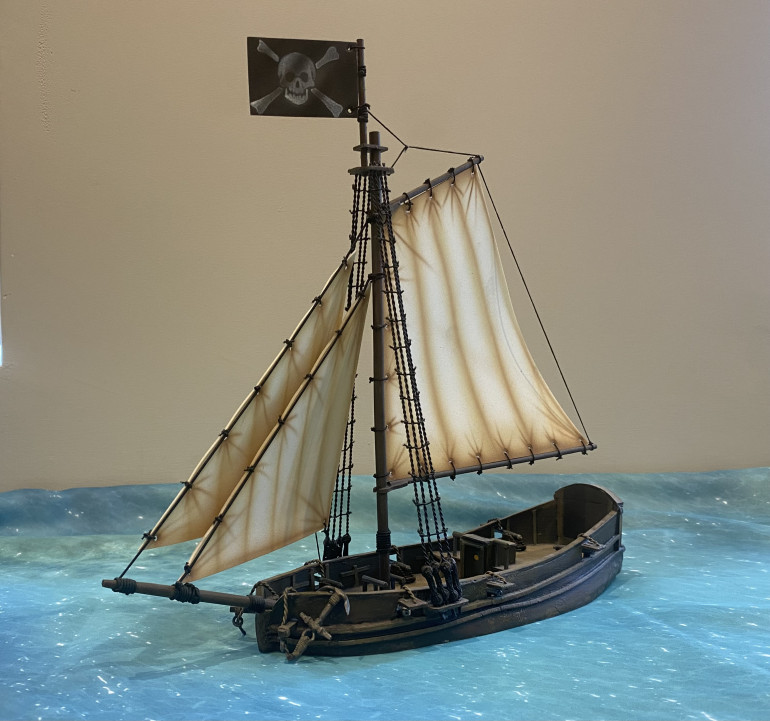 Currently my smallest built ship, a resin sloop from Ainsty Castings. Armed with 6 small cannons. The sloop is a probably one of the more common ships amongst Pirates due to its speed and excellent manoeuvrability.
Currently my smallest built ship, a resin sloop from Ainsty Castings. Armed with 6 small cannons. The sloop is a probably one of the more common ships amongst Pirates due to its speed and excellent manoeuvrability. 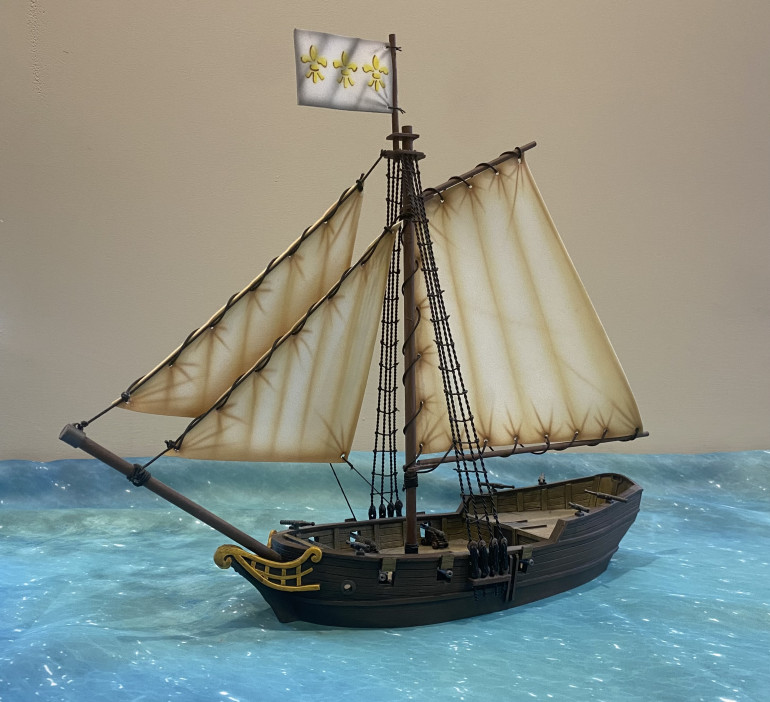 Another small sloop, this time flying French colours. Armed with 6 small cannons and 4 swivel guns. Model is from the Firelock Games range of resin ships.
Another small sloop, this time flying French colours. Armed with 6 small cannons and 4 swivel guns. Model is from the Firelock Games range of resin ships.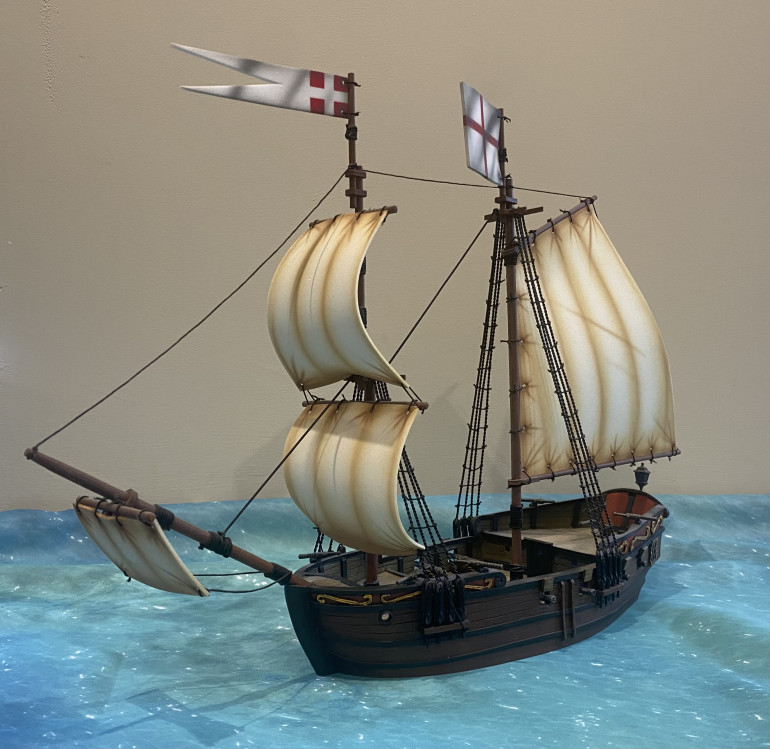 Brigantine armed with 8 light cannons and 6 swivel guns. A relatively standard ship with average manoeuvrability, firepower and protection. This model is from the Firelock Games range and is shown with English Colours.
Brigantine armed with 8 light cannons and 6 swivel guns. A relatively standard ship with average manoeuvrability, firepower and protection. This model is from the Firelock Games range and is shown with English Colours.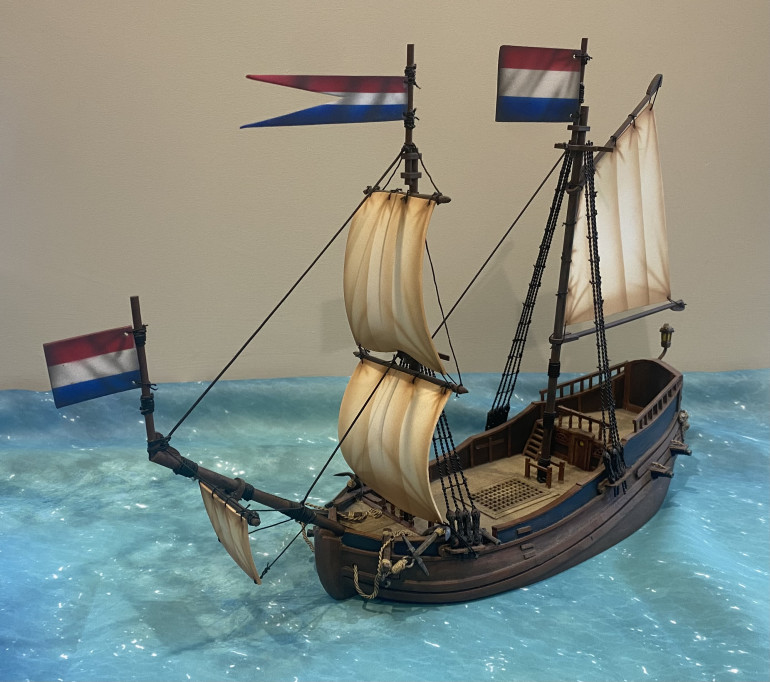 Anisty Castings Resin Merchantman. A rather robust ship with only minimal armament of 6 cannons. Currently flying Dutch colours.
Anisty Castings Resin Merchantman. A rather robust ship with only minimal armament of 6 cannons. Currently flying Dutch colours.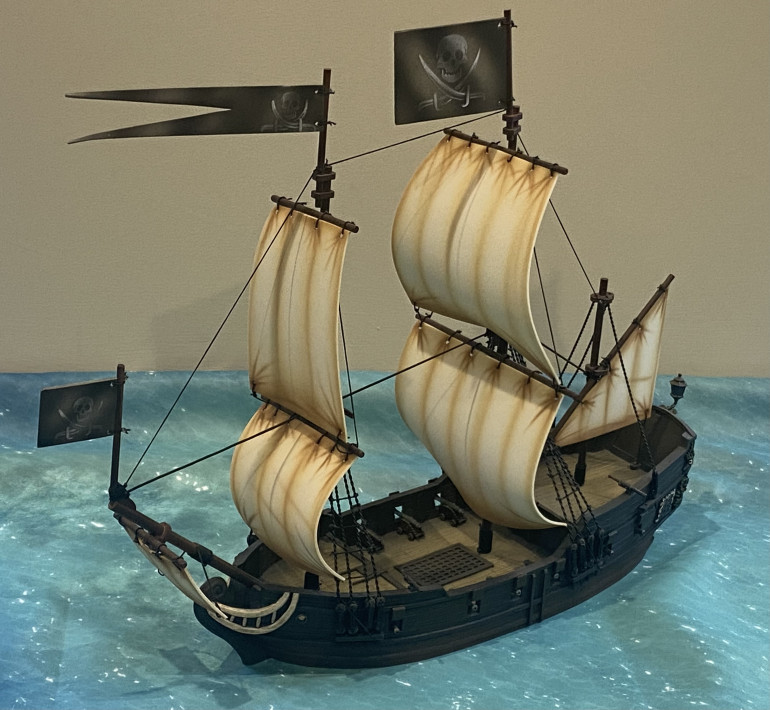 Light Frigate, the first and smallest of the Warships. Model from Firelock Games. Shown flying Pirate colours at this time. Armed with 12 cannons and 4 swivel guns.
Light Frigate, the first and smallest of the Warships. Model from Firelock Games. Shown flying Pirate colours at this time. Armed with 12 cannons and 4 swivel guns.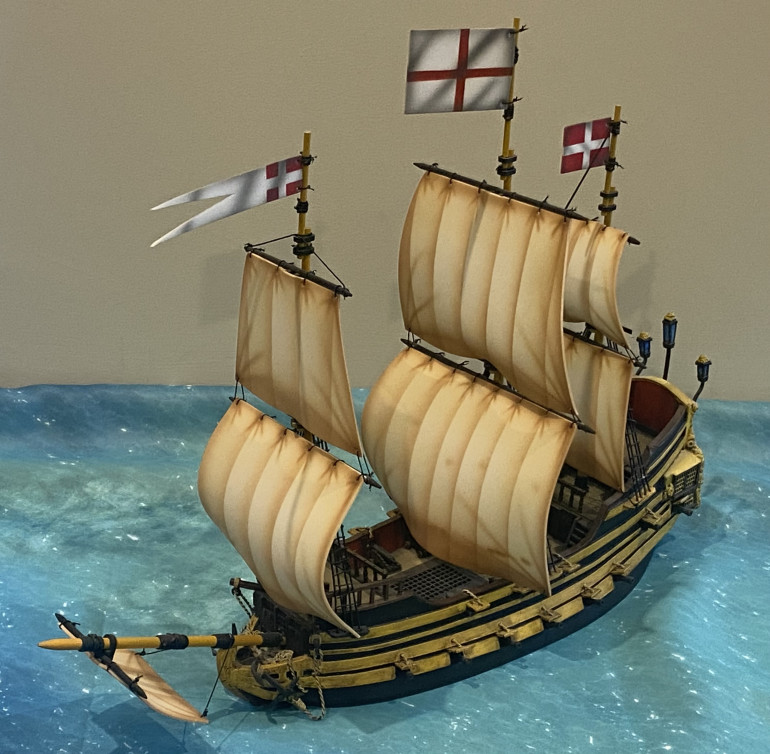 Ainsty Castings resin Man of War. Armed with 24 Cannon, including a pair of bow chasers, spread over two decks. Flying English colours and currently the second largest of my assembled ships.
Ainsty Castings resin Man of War. Armed with 24 Cannon, including a pair of bow chasers, spread over two decks. Flying English colours and currently the second largest of my assembled ships.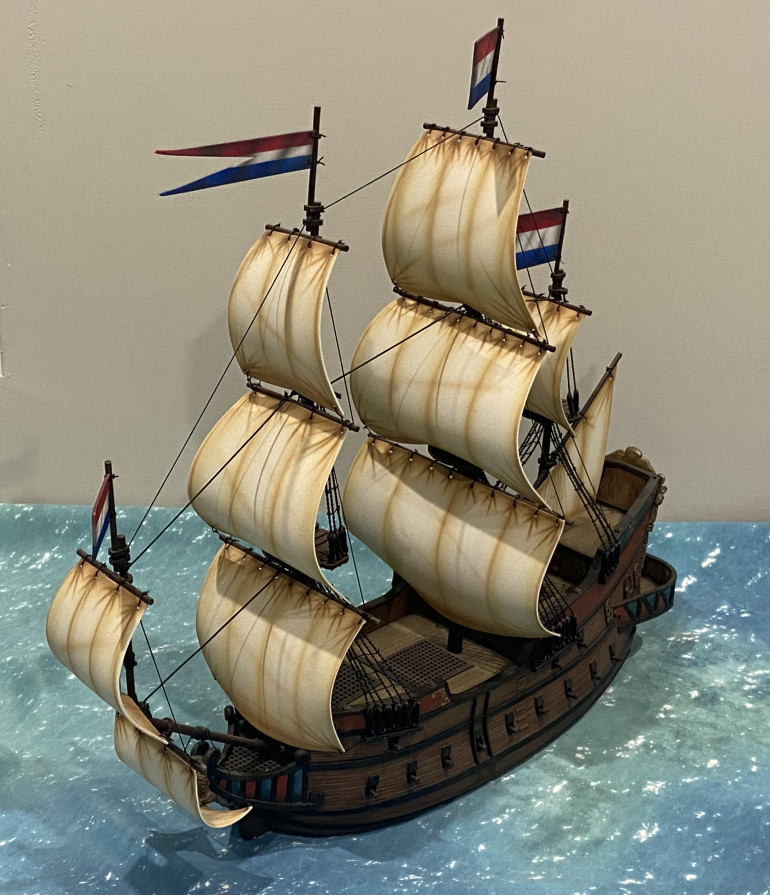 My largest finished ship, the Galleon from Firelock Games. Flying Dutch colours this slow hulk is bound to be a prime target due to all the cargo it carries. It won't go down easily though, armed with 28 cannons and room for 8 swivel guns it will be a brave captain indeed who takes on this behemoth.
My largest finished ship, the Galleon from Firelock Games. Flying Dutch colours this slow hulk is bound to be a prime target due to all the cargo it carries. It won't go down easily though, armed with 28 cannons and room for 8 swivel guns it will be a brave captain indeed who takes on this behemoth.The 9 ships I still have to complete include larger and smaller varieties than those already done. From memory, the largest I have is a 50-gun monster, destined to become the dominant power of the seas.
I also have a small fleet of native canoes and a few rowboats to add to the mix. Plenty of options to choose from.
A Brief History
A Brief History
The late 17th and early 18th centuries are often considered the “Golden Age of Piracy” in the Caribbean, and pirate ports experienced rapid growth.
The military power of the Spanish Empire in the New World started to decline when King Philip IV of Spain was succeeded by King Charles II.
While Spanish America in the late 17th century had little military protection as Spain entered a phase of decline as a Great Power, it also suffered less from the Spanish Crown’s mercantilist policies with its economy. This lack of interference, combined with a surge in output from the silver mines due to increased availability of slave labour began a resurgence in the fortunes of Spanish America.
England, France, and the Dutch Netherlands had all become New World colonial powerhouses in their own right.
Worried by the Dutch Republic’s intense commercial success since the signing of the Treaty of Westphalia, England launched a trade war with the Dutch. The English Parliament passed the first of its own mercantilist Navigation Acts and the Staple Act that required that English colonial goods be carried only in English ships and legislated limits on trade between the English colonies and foreigners. These laws were aimed at ruining the Dutch merchants whose livelihoods depended on free trade. This trade war would lead to three outright Anglo-Dutch Wars over the course of the next twenty-five years.
Meanwhile, King Louis of France had finally assumed his majority with the death of his regent mother Queen Anne of Austria’s chief minister, Cardinal Mazarin, in 1661. The “Sun King’s” aggressive foreign policy was aimed at expanding France’s eastern border with the Holy Roman Empire and led to constant warfare against shifting alliances that included England, the Dutch Republic, the various German states and Spain. In short, Europe was consumed in the final decades of the 17th century by nearly constant dynastic intrigue and warfare, an opportune time for pirates and privateers to engage in their bloody trade.
In the Caribbean, this political environment created many new threats for colonial governors. The sugar island of Sint Eustatius changed ownership ten times between 1664 and 1674 as the English and Dutch duelled for supremacy there.
Consumed with the various wars in Europe, the mother countries provided few military reinforcements to their colonies, so the governors of the Caribbean increasingly made use of buccaneers as mercenaries and privateers to protect their territories or carry the fight to their country’s enemies. Perhaps unsurprisingly, these undisciplined and greedy dogs of war often proved difficult for their sponsors to control.
By the late 17th century, the great Spanish towns of the Caribbean had begun to prosper, and Spain also began to make a slow, fitful recovery, but remained poorly defended militarily because of Spain’s problems and so were sometimes easy prey for pirates and privateers. The English presence continued to expand in the Caribbean as England itself was rising toward great power status in Europe. Captured from Spain in 1655, the island of Jamaica had been taken over by England and its chief settlement of Port Royal had become a new English buccaneer haven in the midst of the Spanish Empire. Jamaica was slowly transformed, along with Saint Kitts, into the heart of the English presence in the Caribbean.
At the same time the French Lesser Antilles colonies of Guadeloupe and Martinique remained the main centres of French power in the Caribbean, as well as among the richest French possessions because of their increasingly profitable sugar plantations. The French also maintained privateering strongholds around western Hispaniola, at their traditional pirate port of Tortuga, and their Hispaniola capital of Petit-Goave.
Shrouds, Ratlines and Deadeyes
Rigging.
Rigging is a bit like marmite or vegemite, you either love or hate it. I like the look of having it on ships as I feel that it finishes them off, however, I also understand that full rigging would be an absolute nightmare to game around. With that in mind I have gone with a rather streamlined way of doing things, adding just enough to give the feel of it without becoming a massive undertaking. One of the first things I see when looking at rigging is the shrouds and ratlines along with the dead eyes. The ratlines are what we often see seamen scurrying up in pirate movies and form a kind of ladder between the shrouds of a sailing ship. Deadeyes are small round wooden discs with holes in them. The deadeyes are used as a ‘block and tackle’ and could create greater tension in the shrouds.
I wanted to use both on my ships because the shrouds and ratlines just look good, and the deadeyes add an extra point of interest to the bottom of them and help create the illusion of rigging.
The obvious choice for the shrouds was a black elastic string. It could be stretched to give it a nice taught look. The downside is that over time it will start to lose its elasticity and start to sag.
I opted for metal shrouds in the end for a couple of reasons.
- I can magnetise prone-looking models to make them look like they are climbing the rigging.
- It’s rigid and won’t sag over time.
- Being stiff it adds a considerable amount of support to the masts.
Old Glory sell a nice collection of metal deadeyes that will also be used in vast quantities.
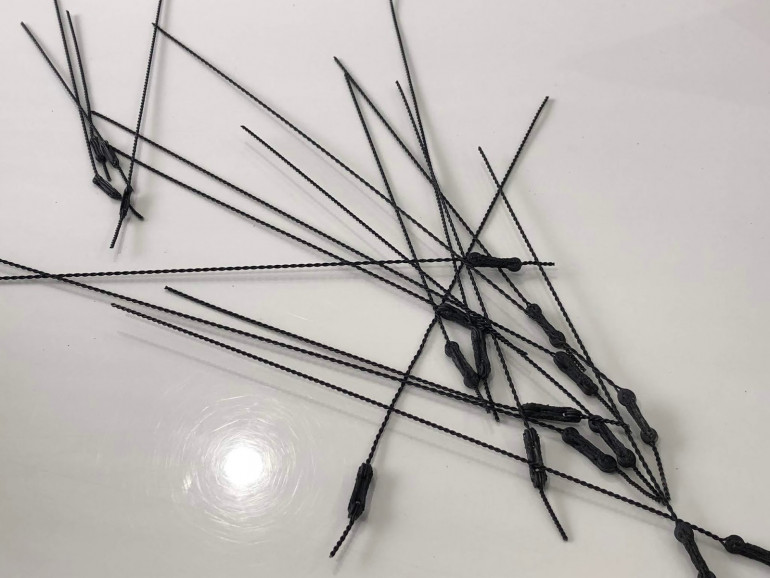 Metal wire was twisted using a small cordless drill. I threaded one of the Old Glory deadeyes onto the wire before putting the ends of the wire into my drill. Carefully I held the deadeye in one hand and the drill in the other. The turning action of the drill causes the wire to twist around itself forming a rope like pattern.
Metal wire was twisted using a small cordless drill. I threaded one of the Old Glory deadeyes onto the wire before putting the ends of the wire into my drill. Carefully I held the deadeye in one hand and the drill in the other. The turning action of the drill causes the wire to twist around itself forming a rope like pattern.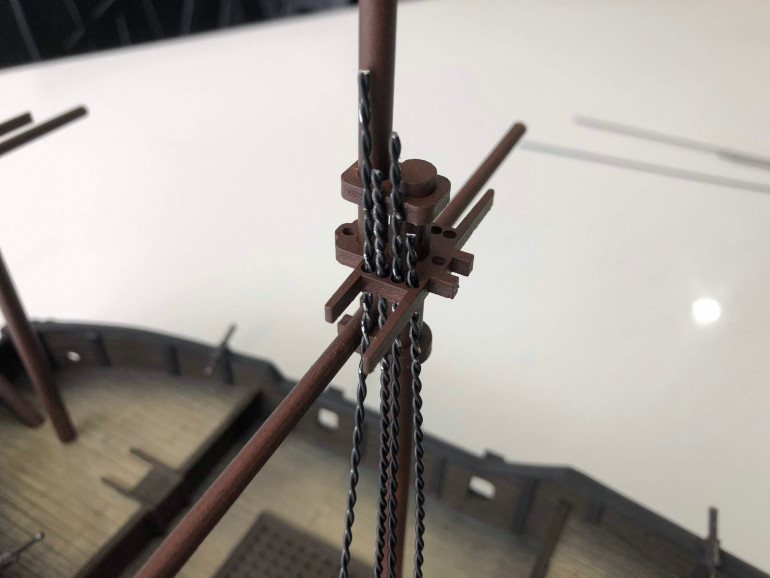 The end of the wire without the deadeyes was put through the holes on the masts and cut to the correct length. As they are metal and quite robust, they did not require gluing.
The end of the wire without the deadeyes was put through the holes on the masts and cut to the correct length. As they are metal and quite robust, they did not require gluing. 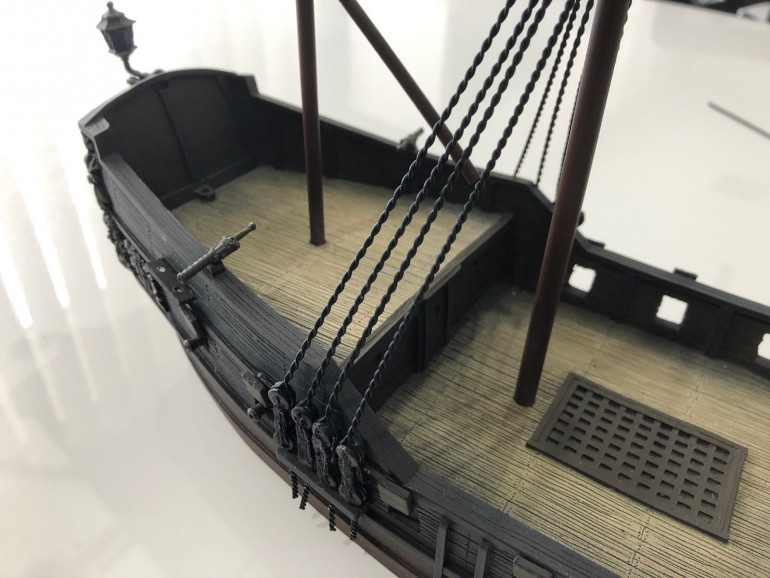 The other end of the wire gets inserted to the holes on the channel on the side of the hull. It takes a bit of fiddling to do and some care as the metal wire can easily scratch the paintwork of the hull.
The other end of the wire gets inserted to the holes on the channel on the side of the hull. It takes a bit of fiddling to do and some care as the metal wire can easily scratch the paintwork of the hull. 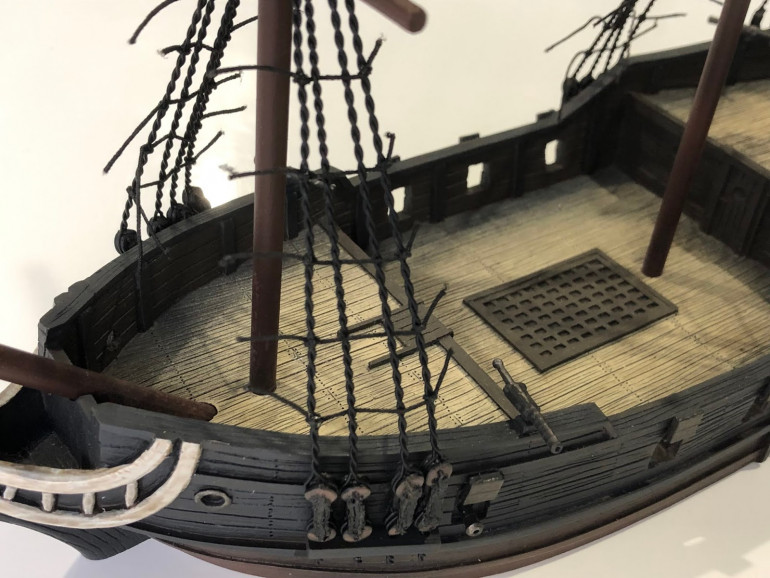 I used thin elastic for the ratlines. I used a template to space out each 'rung of the ladder' 1.5cm to form rectangles that look good enough to give an impression of what they would look like. Once each line was done, I tied it off and added a small dot of superglue to hold it in place. A small touch of matt varnish took away the sine of the glue.
I used thin elastic for the ratlines. I used a template to space out each 'rung of the ladder' 1.5cm to form rectangles that look good enough to give an impression of what they would look like. Once each line was done, I tied it off and added a small dot of superglue to hold it in place. A small touch of matt varnish took away the sine of the glue. 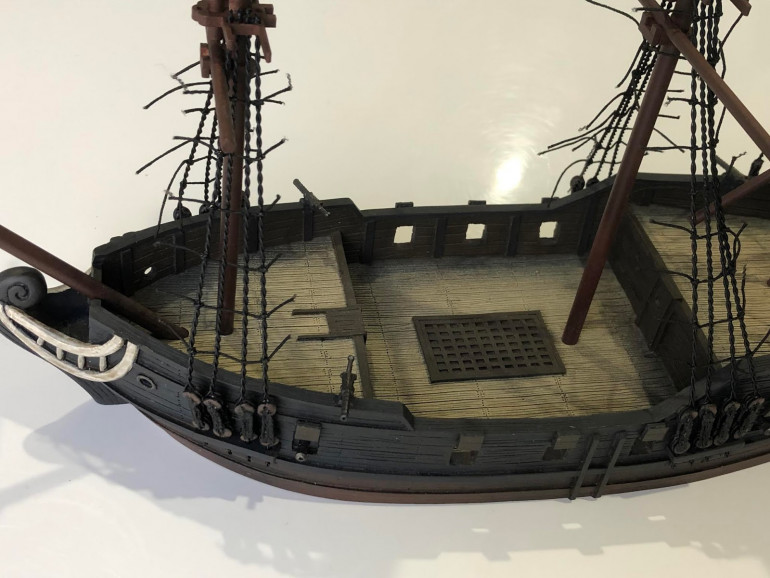 Once they were all done and the glue had dried, I just went around and trimmed up all the loose ends. After that I just added sails and a few other lengths of elastic string to create an illusion of running and standing rigging. I didn't go overboard with the rest of the rigging because I still wanted to be able to get access to the decks for figure placement.
Once they were all done and the glue had dried, I just went around and trimmed up all the loose ends. After that I just added sails and a few other lengths of elastic string to create an illusion of running and standing rigging. I didn't go overboard with the rest of the rigging because I still wanted to be able to get access to the decks for figure placement.Gerry had kindly done a couple of excellent video tutorials which I think came out when the Blood and Plunder two-player boxed set was released. Anyway, Gerry’s tutorial for EVA-style sails can be found here.
and here for canvas style sails.
What’s this all about then?
I love making terrain and I also love the look of tall ships with all their sails and rigging and stuff. (Don’t hate me Gerry but I love me some rigging, I also love dry undead but that’s for a different project)
Now the problem is they don’t work together. Ships with their sails out tend to be out to sea where there is a distinct lack of terrain.
At a Port, where there is lots of lovely terrain there is a distinct lack of sailage. It would cause a few problems if ships docked at port with all their sails unfurled.
So here we have a problem already and I may have to use a degree of poetic license to cover off on both.
I have a fairly large collection of Firelock Games figures still in their boxes from the last Kickstarter Campaign. I also backed their first Kickstarter Campaign plus I have a few other ship models which I have picked up over the years.
With the addition of 3D printing, I reckon I can make up a fairly large fleet of ships which I can divide between the different maritime nations plus of course Pirates themselves.
I like the idea of Blood and Plunder being historically correct, or as close as, but don’t want to rule out the option of going a bit Pirates of the Caribbean too if the mood takes me, and knowing myself fairly well these days I suspect the mood will take me in that direction sooner or later.
For Rules, there is Blood and Plunder, but I will also be looking at another set of rules which may work better for what I have in mind, although I am keeping my options open.
So, I already have a good starting point to kick off from. That blue sea mat is going to have to go though as it’s just too dark for my liking. Also, at 6′ x 4′ it’s just a little bit small for what I have in mind.
I also have a few buildings that I may try to incorporate into a port or similar. Either way, I like the light sand colour on these so will do my best to make any further pieces of terrain fit in with them. If nothing else, it will then give me options when playing smaller games.
Finally, I want to incorporate elements that can be used with Firelock Games forthcoming Port Royal Skirmish game.
Skirmish games benefit from having terrain that has multiple levels and access points, so something along the lines of a Mordheim table but with a Pirate theme. It’s no use to have all the buildings fully built as they then really just become objects of line-of-sight blocking terrain. With multiple levels joined by walkways and gantries, with ladders and destroyed sections, it creates a much more fun space to play across. Of course, this also does not mean that all the buildings and terrain pieces need to fit that description but there needs to be enough for a good skirmish game too.
Points to consider.
- Consistent colour and basing across all terrain to allow mixing and matching.
- Skirmish-style terrain with multiple levels.
- Room for a good variety of ships including a few larger ones.
- Ensigns on ships need to be removable to allow for ships to be captured.
- Caribbean feel to both the sea and terrain if possible.
- Indigenous populations may already have built some structures.
- The ability to add some more ‘Hollywood/Fantasy’ elements. i.e
- Skull Island
- Kraken
- Ghost Ship
- Cannibals
- Sharks
- Rope Bridges
- Ship Wreck





























